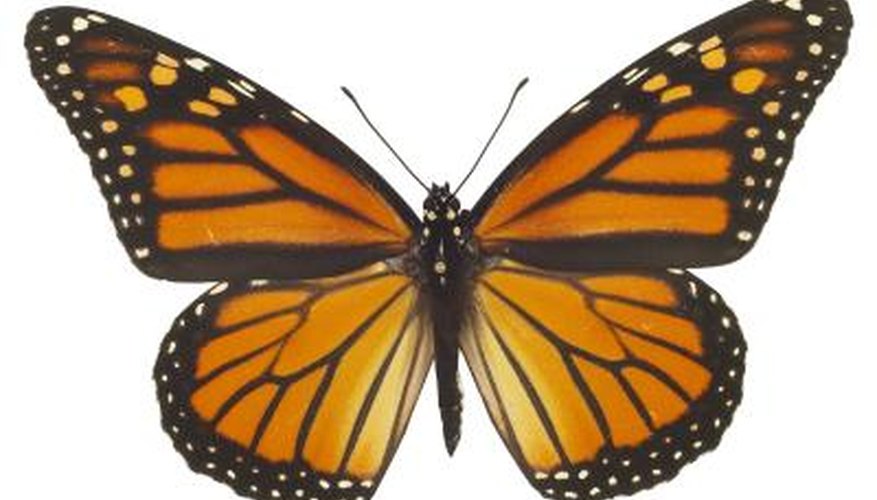The world of insects differs drastically from mammalian development. Insects undergo metamorphosis, which falls into one of two types. Incomplete metamorphosis consists of youthful insects -- or instars -- that resemble the adult. Complete metamorphosis -- undergone by insects such as butterflies and flies -- consists of several stages and forms prior to the adult emerging.
Four Stages
One disadvantage of complete metamorphosis as compared to incomplete metamorphosis is time -- at least in some species. Although the time of complete metamorphosis varies from species to species, it always requires four stages prior to reaching the adult reproductive stage. Incomplete metamorphosis has only three stages. This delay in time prior to becoming reproductive can make spreading genes to future generations more challenging.
- One disadvantage of complete metamorphosis as compared to incomplete metamorphosis is time -- at least in some species.
- Although the time of complete metamorphosis varies from species to species, it always requires four stages prior to reaching the adult reproductive stage.
Lack of Mobility During Development
Although insects undergoing complete metamorphosis have one distinctive food advantage -- namely, that they don't compete with adults of the same species for a similar diet -- there is still a large drawback. Out of the four stages -- egg, larva, pupa and adult -- only one stage features enhanced mobility. The egg and pupa stages are completely immobile, while the larva stage limits mobility. As insects undergoing incomplete metamorphosis resemble adults in looks and features, only the egg stage features complete immobility.
- Although insects undergoing complete metamorphosis have one distinctive food advantage -- namely, that they don't compete with adults of the same species for a similar diet -- there is still a large drawback.
- As insects undergoing incomplete metamorphosis resemble adults in looks and features, only the egg stage features complete immobility.
Short Adult Life
The journey for insects may be long and hard and the downside is that the majority of most insects' lifespans is that they are located within the egg, larva and pupa stages far longer than the adult stage. Some species of mayflies may only live a day or two in the adult form. Butterflies and moths generally live at least a few months. This can limit the time that insects have to reproduce.
- The journey for insects may be long and hard and the downside is that the majority of most insects' lifespans is that they are located within the egg, larva and pupa stages far longer than the adult stage.
Exoskeletons and Molting
The downside of all insects undergoing complete or incomplete metamorphosis is that they must moult. These growing stages are essential as insects' hard exoskeleton doesn't grow or stretch like mammalians bodies. Most insects must undergo several different moults, each of which is very energetically costly, slowing insects down, and also making them more vulnerable to predators. Larva shed their skin prior to entering the immobile pupa stage.
- The downside of all insects undergoing complete or incomplete metamorphosis is that they must moult.
- These growing stages are essential as insects' hard exoskeleton doesn't grow or stretch like mammalians bodies.
